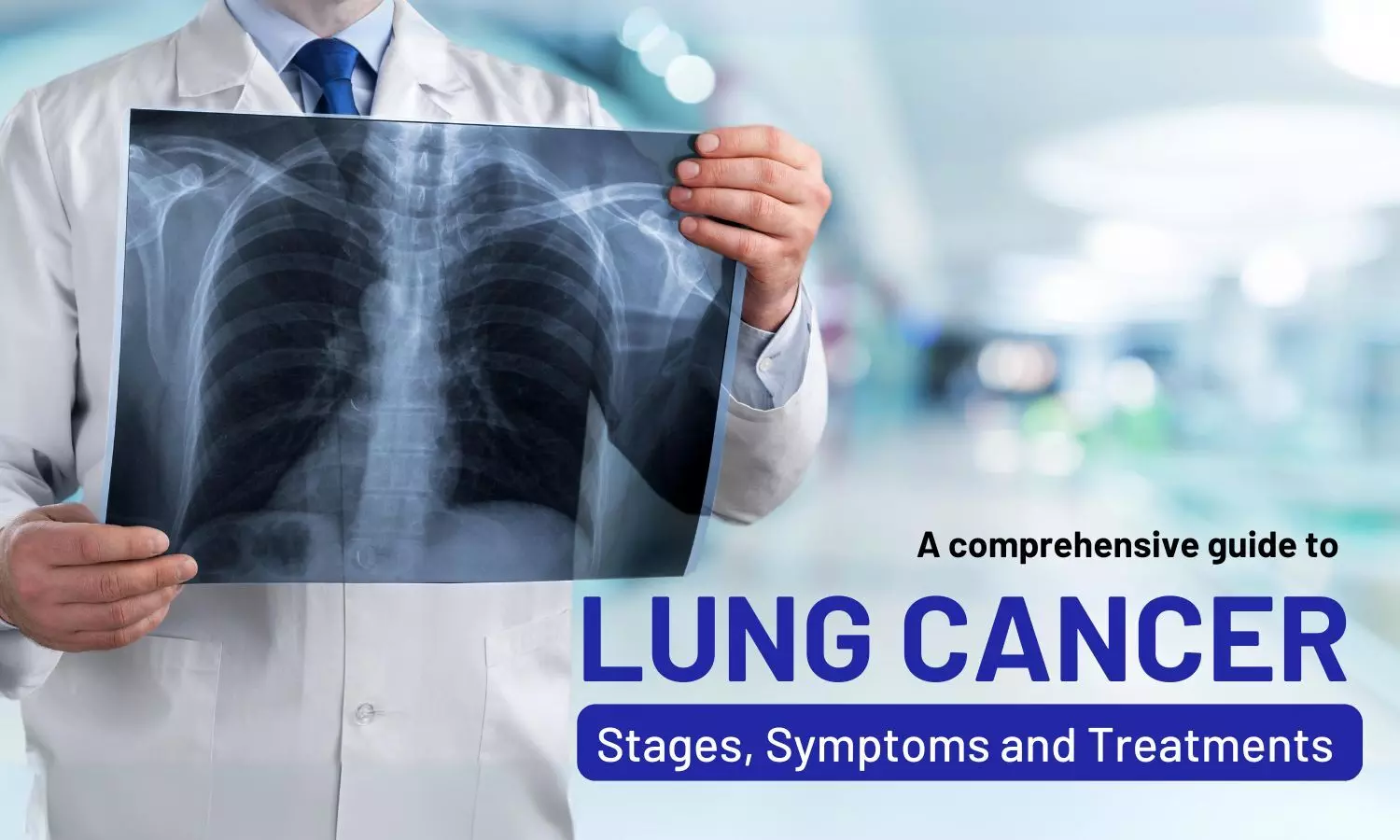Live
- WPL 2025: Matthews, Sciver-Brunt and Harmanpreet carry MI to massive 213/4
- MLA Anirudh Reddy Accuses KTR of Involvement in Manhattan Project Scam
- TGPSC Clarifies on False Propaganda Regarding Group-1 Recruitment
- Hyderabad Police Ensures Security as Holi and Ramadan's Second Friday Coincide
- Five MLCs Elected Unopposed in Telangana Under MLA Quota
- Sambhal prepares for a peaceful Holi with tightened security and special patrols
- CNG, PNG prices to become cheaper in Rajasthan from March 14
- Anti-Rape ad to screen in theaters before movies, like health advisories
- Prodigy Finance Offers Three Scholarship Awards totalling an amount of $19,000 for Global Students Starting Fall 2025
- Champions League drama likely to affect La Liga with big games this weekend
A Quick View of Lung Cancer Causes, Symptoms, Treatments, and Preventions


Lung cancer affects the lungs and surrounding tissues and requires medical attention. Usually, specialists remove the lung tumour, which helps with the pain.
Lung cancer affects the tissues of the lungs and damages the air passages. There are two common types of lung cancer: small-cell lung cancer and non-small-cell lung cancer. Smoking is one of the leading causes of lung cancer. Uncontrolled cell division in the lungs leads to severe complications, and the damaged cells create masses that take the form of a lung tumour.
What are the symptoms of lung cancer?
- Persistent chest pain followed by discomfort
- Chronic cough with blood vomitings
- Cough that worsens with time
- Difficulty breathing
- Hoarse voice due to damage to the lung tissues
- Difficulty swallowing foods
- No urge to eat
- Shoulder pain
- Weight loss without a specific reason
- Extreme fatigue
Consult a specialist immediately if you experience any of these symptoms. The specialist will perform a lung cancer test. Thus, you will have a clear idea of the reasons for discomfort and can start lung cancer treatments.
Types of Lung Cancer
Non-small Cell Lung Cancer
Non-small cell lung cancer is the most common type of lung cancer, and it affects over 80% of patients. Adenocarcinoma and squamous cell carcinoma are the two common types.
Small Cell Lung Cancer
This is another form of lung cancer where specialists usually find a small lung tumour spreading to other parts. Small or oat cell carcinoma and combined small cell carcinoma are the usual small cell lung cancer types.
Certain other types of lung cancer may start around the lungs. The disease can affect lymph nodes, bones or soft tissue, and the lining of the lungs.
Metastatic lung cancer is another form that starts in one lung and gradually spreads to the entire body. This type of lung cancer is challenging to treat as it spreads to other parts.
Lung Cancer Stages
Stage 0: Lung cancer hasn’t spread to other parts, and it’s in the outer lining of the lung.
Stage 1: Cancer in this stage hasn’t spread outside the lung. Coughing with blood is one of the main stage 1 lung cancer symptoms.
Stage 2: Stage 2 lung cancer is when it has spread to the lymph nodes or other parts. More than one tumour can affect the lung and body parts surrounding it.
Stage 3: Stage 3 cancer is the condition when cancer spreads to lymph nodes and other organs. Sometimes, there are multiple tumours in different lobes of the lungs, and shortness of breath is the main stage 3 lung cancer symptom.
Stage 4: The 4th stage of lung cancer is the final stage when cancer has spread to other vital organs like the heart.
How to Prevent Lung Cancer?
- Quit smoking to lower the risk of lung cancer. Also, it helps you get rid of other lung problems.
- Avoid passive smoking or the use of other substances that may increase the risk of lung cancer.
- Maintaining a healthy weight is essential. Research shows that a diet rich in fruits and vegetables reduces the risk of lung cancer.
- Do you have an increased risk of getting lung cancer? Then, it’s advisable to get an early screening.
So that you can lead a healthier life and stay away from illness worries.
Lung Cancer Survival Rate
The survival rate depends on how much the cancer has spread. Stage 1 lung cancer survival rate is higher, so make sure you visit a specialist as early as possible. The five-year lung cancer survival rate is 22.9%, and it’s applicable for any stage. The specialist first analyses your family history and may recommend a blood test. It helps in the early detection of lung cancer; thus, there will be a higher survival rate. Also, your specialist may recommend a chest X-ray or CT scan to get a view of the tumour. Hence, it helps the specialist to provide effective treatments.
Lung Cancer Treatments
Surgery
Doctors recommend surgery for non-small cell lung cancer, which hasn’t spread to other organs. The surgeon usually removes the tumour and some healthy cells, ensuring no cancer cells are left behind.
Drug Therapy
Drug therapy targets the mutations, thus slowing down or damaging the cancer cells. Doctors also recommend angiogenesis inhibitors, which slow down the growth of cancerous cells.
Chemotherapy
Chemotherapy is one of the most effective treatments, combining multiple medications. Specialists may start chemotherapy before or post-surgery, producing better effects.
Treatments increase the survival rate, and you can live a better life free from pain and discomfort.

© 2025 Hyderabad Media House Limited/The Hans India. All rights reserved. Powered by hocalwire.com






